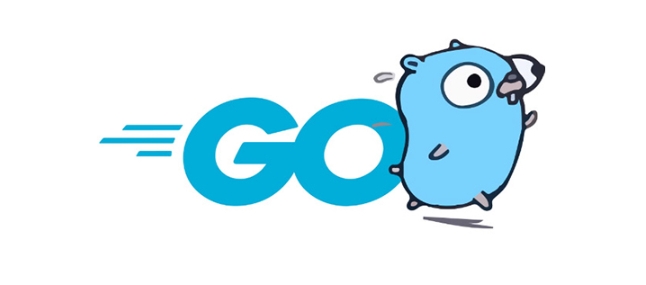In Go, copying slices requires attention to the correct way to avoid errors or performance issues. 1. It is recommended to use the built-in copy function for copy. The syntax is copy(dst, src). If the copy length is smaller, the target slice needs to allocate capacity in advance, otherwise the copy content will be truncated; 2. For slices of structure or pointer type, only copy is used as a shallow copy, and you need to manually traverse and create a new object to achieve deep copy to ensure that the new and old slices are independent; 3. Using the slice expression newSlice := oldSlice[:] will share the underlying array, modifying each other and affecting each other, and are not suitable for the completely isolated copy requirements.

In Go, copying a slice looks simple, but if you don't pay attention to details, it is easy to make mistakes or cause performance problems. Copying a slice correctly not only moves data from one place to another, but also makes sure that new and old slices do not affect each other.

Use built-in copy functions
Go provides built-in copy function, which is the recommended way to copy slices. Its syntax is:
copy(dst, src)
This function will copy the data in src into dst , and the copy length will be the smaller of the two.

Two things to note when using:
- The target slice (dst) needs to be allocated in advance;
- If the target slice capacity is insufficient, the copied content will be truncated.
For example:

src := []int{1, 2, 3}
dst := make([]int, 2)
copy(dst, src) // dst becomes [1, 2] Because dst only has 2 capacity, you can only copy the first two elements.
You need to pay attention to the underlying array to create a deep copy
Although copy can copy the content of slice, if you are dealing with slices of structure or pointer type, just copy is not enough.
For example, you have a slice of type []*User , and each element in it is a pointer. At this time, even if copy is used, the pointer address is simply copied, not the object itself. The old and new slices still share objects in the same underlying array, modifying one will affect the other.
Workaround: You need to manually traverse the source slice and create a new copy for each element:
type User struct {
Name string
}
src := []*User{{Name: "Alice"}, {Name: "Bob"}}
dst := make([]*User, len(src))
for i := range src {
dst[i] = &User{Name: src[i].Name}
}In this way, dst and src are completely independent.
Can slice expressions also "copy"? Don't be misled
Sometimes you will see this writing method:
newSlice := oldSlice[:]
This does generate a new slice header, but it points to the same underlying array . In other words, if you modify an element in newSlice, oldSlice will also change!
This situation is suitable for temporary operational data, but this is not suitable if you want two slices to be completely isolated. If you want to really copy, you should combine the aforementioned copy or copy elements one by one.
Basically that's it. Go's slice copy seems simple, but to truly achieve "correctness", you still have to see clearly whether you want to share data, shallow copy, or deep copy.
The above is the detailed content of How to copy a slice correctly in Go. For more information, please follow other related articles on the PHP Chinese website!

Hot AI Tools

Undress AI Tool
Undress images for free

Undresser.AI Undress
AI-powered app for creating realistic nude photos

AI Clothes Remover
Online AI tool for removing clothes from photos.

Clothoff.io
AI clothes remover

Video Face Swap
Swap faces in any video effortlessly with our completely free AI face swap tool!

Hot Article

Hot Tools

Notepad++7.3.1
Easy-to-use and free code editor

SublimeText3 Chinese version
Chinese version, very easy to use

Zend Studio 13.0.1
Powerful PHP integrated development environment

Dreamweaver CS6
Visual web development tools

SublimeText3 Mac version
God-level code editing software (SublimeText3)
 What is the standard project layout for a Go application?
Aug 02, 2025 pm 02:31 PM
What is the standard project layout for a Go application?
Aug 02, 2025 pm 02:31 PM
The answer is: Go applications do not have a mandatory project layout, but the community generally adopts a standard structure to improve maintainability and scalability. 1.cmd/ stores the program entrance, each subdirectory corresponds to an executable file, such as cmd/myapp/main.go; 2.internal/ stores private code, cannot be imported by external modules, and is used to encapsulate business logic and services; 3.pkg/ stores publicly reusable libraries for importing other projects; 4.api/ optionally stores OpenAPI, Protobuf and other API definition files; 5.config/, scripts/, and web/ store configuration files, scripts and web resources respectively; 6. The root directory contains go.mod and go.sum
 How do you read a file line by line in Go?
Aug 02, 2025 am 05:17 AM
How do you read a file line by line in Go?
Aug 02, 2025 am 05:17 AM
Using bufio.Scanner is the most common and efficient method in Go to read files line by line, and is suitable for handling scenarios such as large files, log parsing or configuration files. 1. Open the file using os.Open and make sure to close the file via deferfile.Close(). 2. Create a scanner instance through bufio.NewScanner. 3. Call scanner.Scan() in the for loop to read line by line until false is returned to indicate that the end of the file is reached or an error occurs. 4. Use scanner.Text() to get the current line content (excluding newline characters). 5. Check scanner.Err() after the loop is over to catch possible read errors. This method has memory effect
 How do you handle routing in a Go web application?
Aug 02, 2025 am 06:49 AM
How do you handle routing in a Go web application?
Aug 02, 2025 am 06:49 AM
Routing in Go applications depends on project complexity. 1. The standard library net/httpServeMux is suitable for simple applications, without external dependencies and is lightweight, but does not support URL parameters and advanced matching; 2. Third-party routers such as Chi provide middleware, path parameters and nested routing, which is suitable for modular design; 3. Gin has excellent performance, built-in JSON processing and rich functions, which is suitable for APIs and microservices. It should be selected based on whether flexibility, performance or functional integration is required. Small projects use standard libraries, medium and large projects recommend Chi or Gin, and finally achieve smooth expansion from simple to complex.
 How do you parse command-line flags in Go?
Aug 02, 2025 pm 04:24 PM
How do you parse command-line flags in Go?
Aug 02, 2025 pm 04:24 PM
Go's flag package can easily parse command line parameters. 1. Use flag.Type() to define type flags such as strings, integers, and booleans; 2. You can parse flags to variables through flag.TypeVar() to avoid pointer operations; 3. After calling flag.Parse(), use flag.Args() to obtain subsequent positional parameters; 4. Implementing the flag.Value interface can support custom types to meet most simple CLI requirements. Complex scenarios can be replaced by spf13/cobra library.
 How do you declare constants in Go?
Aug 02, 2025 pm 04:21 PM
How do you declare constants in Go?
Aug 02, 2025 pm 04:21 PM
In Go, constants are declared using the const keyword, and the value cannot be changed, and can be of no type or type; 1. A single constant declaration such as constPi=3.14159; 2. Multiple constant declarations in the block are such as const(Pi=3.14159; Language="Go"; IsCool=true); 3. Explicit type constants such as constSecondsInMinuteint=60; 4. Use iota to generate enumeration values, such as const(Sunday=iota;Monday;Tuesday) will assign values 0, 1, and 2 in sequence, and iota can be used for expressions such as bit operations; constants must determine the value at compile time,
 How do you use conditional statements like if-else in Go?
Aug 02, 2025 pm 03:16 PM
How do you use conditional statements like if-else in Go?
Aug 02, 2025 pm 03:16 PM
The if-else statement in Go does not require brackets but must use curly braces. It supports initializing variables in if to limit scope. The conditions can be judged through the elseif chain, which is often used for error checking. The combination of variable declaration and conditions can improve the simplicity and security of the code.
 What does the go run command do?
Aug 03, 2025 am 03:49 AM
What does the go run command do?
Aug 03, 2025 am 03:49 AM
gorun is a command for quickly compiling and executing Go programs. 1. It completes compilation and running in one step, generates temporary executable files and deletes them after the program is finished; 2. It is suitable for independent programs containing main functions, which are easy to develop and test; 3. It supports multi-file operation, and can be executed through gorun*.go or lists all files; 4. It automatically processes dependencies and uses the module system to parse external packages; 5. It is not suitable for libraries or packages, and does not generate persistent binary files. Therefore, it is suitable for rapid testing during scripts, learning and frequent modifications. It is an efficient and concise way of running.
 How to connect to a SQL database in Go?
Aug 03, 2025 am 09:31 AM
How to connect to a SQL database in Go?
Aug 03, 2025 am 09:31 AM
To connect to SQL databases in Go, you need to use the database/sql package and a specific database driver. 1. Import database/sql packages and drivers (such as github.com/go-sql-driver/mysql), note that underscores before the drivers indicate that they are only used for initialization; 2. Use sql.Open("mysql","user:password@tcp(localhost:3306)/dbname") to create a database handle, and call db.Ping() to verify the connection; 3. Use db.Query() to execute query, and db.Exec() to execute






